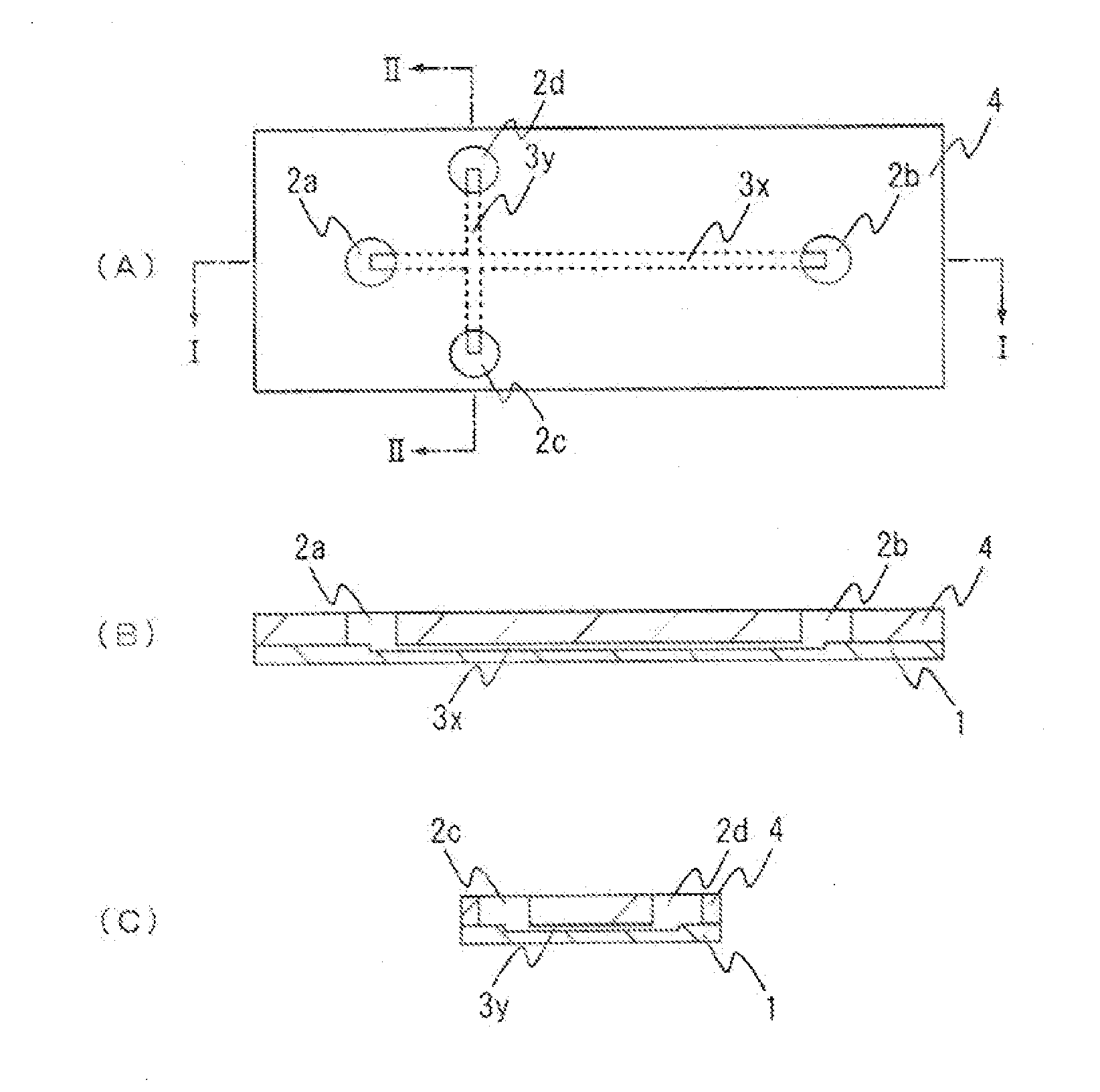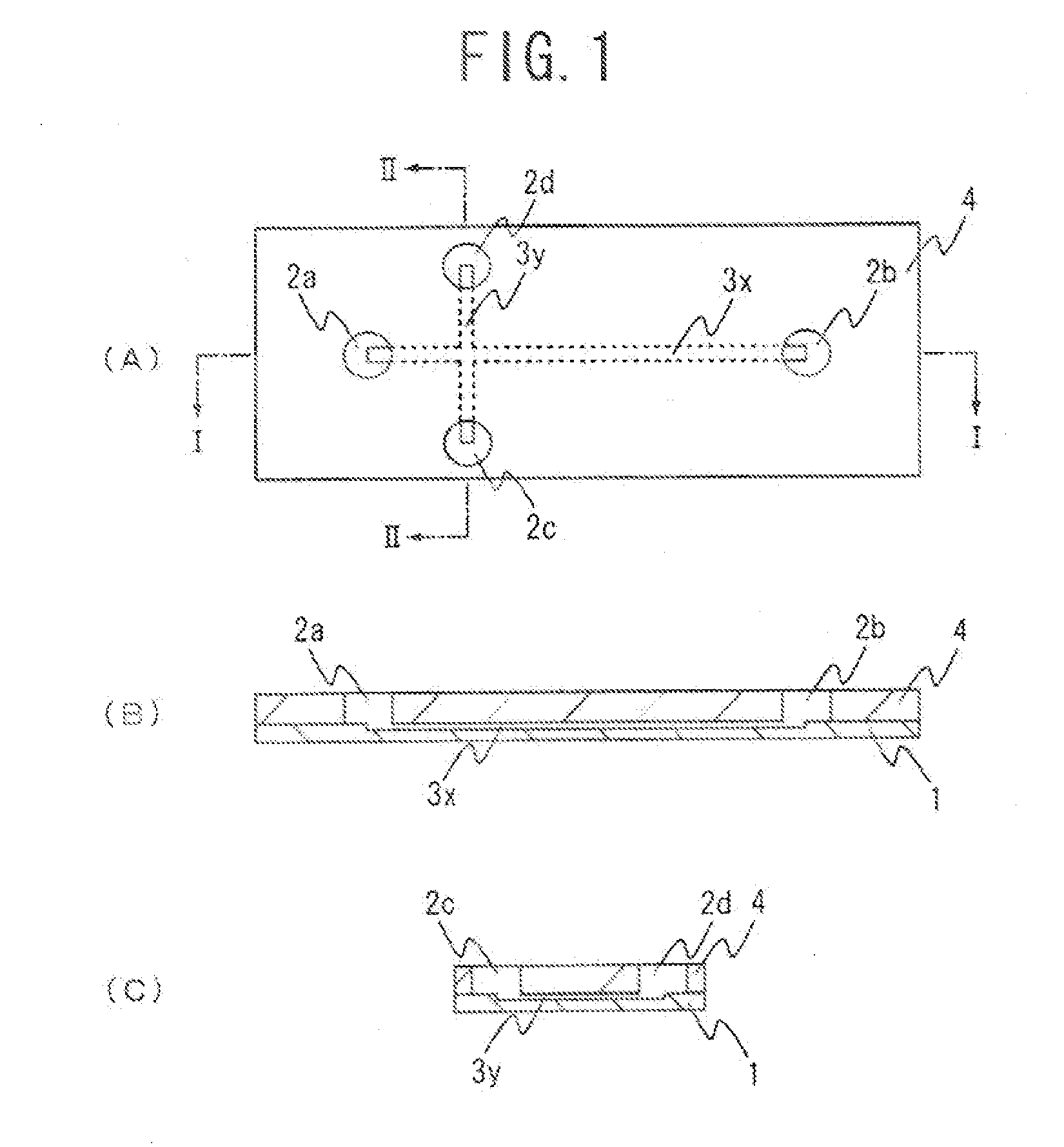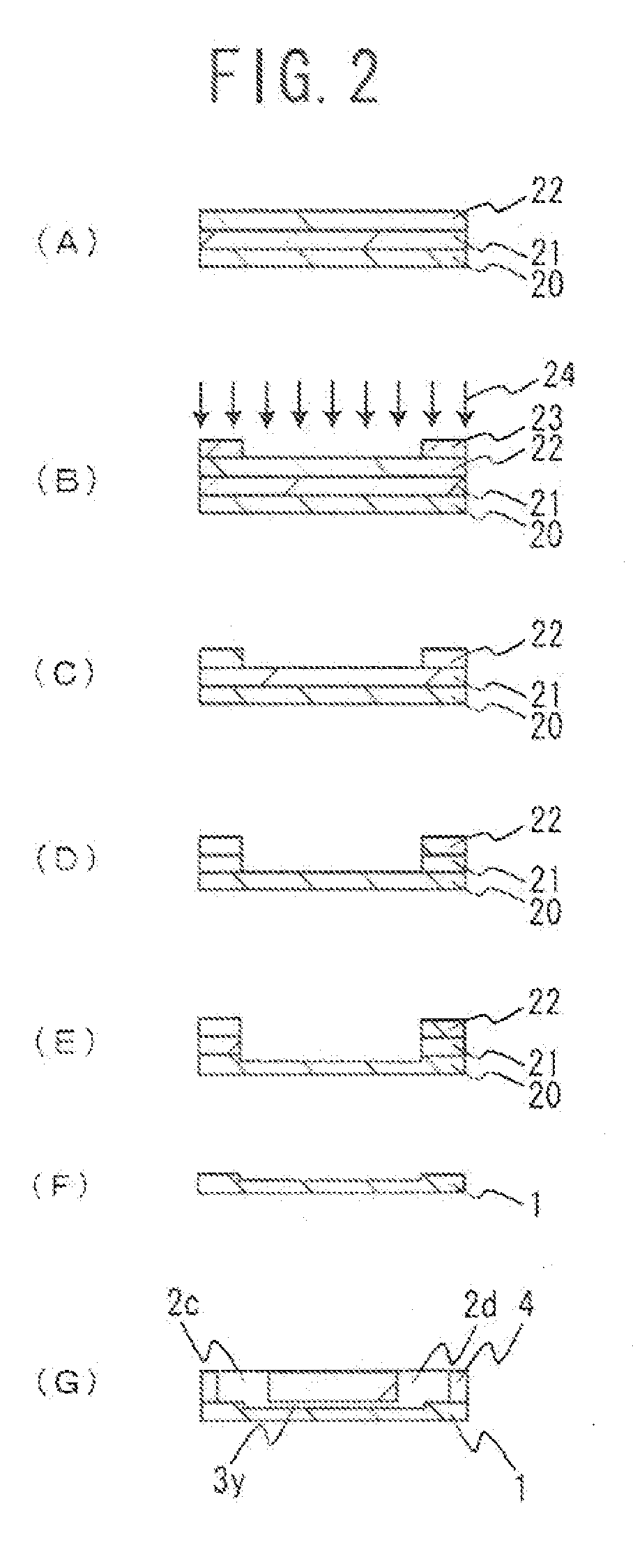Electrophoresis Chip and Electrophoresis Apparatus
a technology of electrophoresis apparatus and electrophoresis chip, which is applied in the direction of diaphragms, biological testing, peptides, etc., can solve the problems of poor processing capability of hplc methods, low accuracy in determining risks, and large cost of analysis apparatus, etc., to achieve accurate analysis of glycosylated hemoglobin, short analysis time, and high accuracy
- Summary
- Abstract
- Description
- Claims
- Application Information
AI Technical Summary
Benefits of technology
Problems solved by technology
Method used
Image
Examples
embodiment 1
[0044]FIG. 1 shows an example of an electrophoresis chip of the present invention. FIG. 1(A) is a plan view of an electrophoresis chip of this embodiment, FIG. 1(B) is a cross-sectional view when taken along I-I of FIG. 1(A), and FIG. 1(C) is a cross-sectional view when taken along II-II of FIG. 1(A). For easier understanding, the size, proportions and like features of each component in the illustrations are different from the actual features of each component. This electrophoresis chip is, as shown in the figures, configured such that an upper substrate 4 is laminated onto a lower substrate 1. A plurality of through-holes (four in this embodiment) is formed in the upper substrate 4. The bottom parts of the four through-holes formed in the upper substrate 4 are sealed with the lower substrate 1 and, thus, fluid reservoirs 2a to 2d are formed. A cross-shaped groove is formed in the lower substrate 1. By sealing the upper part of the cross-shaped groove formed in the lower substrate 1...
embodiment 2
[0084]FIG. 7 shows another example of an electrophoresis chip of the present invention. In FIG. 7, the portions that are identical to those in FIG. 1 are given the same numbers and symbols. In an electrophoresis chip of this embodiment, a plurality of concave portions (four in this embodiment) and a cross-shaped groove are formed in a substrate (lower substrate) 1. A surface of the substrate (lower substrate) 1 is sealed with a sealing material (upper substrate) 4 that has openings at places corresponding to the four concave portions. The four concave portions formed in the substrate (lower substrate) 1 serve as four fluid reservoirs 2a to 2d. By sealing the upper part of the cross-shaped groove formed in the substrate (lower substrate) 1 with the sealing material (upper substrate) 4, a capillary channel for sample analysis 3x and a capillary channel for sample introduction 3y are formed. Otherwise an electrophoresis chip of this embodiment is of the same configuration as the electr...
embodiment 3
[0096]FIG. 8 shows still another example of an electrophoresis chip of the present invention. In FIG. 8, the portions that are identical to those in FIG. 1 are given the same numbers and symbols. In an electrophoresis chip of this embodiment, a plurality of through-holes (four in this embodiment) are formed in a substrate (upper substrate) 4. A cross-shaped groove is formed in the bottom surface of the substrate (upper substrate) 4. The bottom surface of the substrate (upper substrate) 4 is sealed with a sealing material (lower substrate) 1. The bottom parts of the four through-holes formed in the substrate (upper substrate) 4 are sealed with the sealing material (lower substrate) 1, and thereby four fluid reservoirs 2a to 2d are formed. By sealing the lower part of the cross-shaped groove formed in the substrate (upper substrate) with the sealing material, a capillary channel for sample analysis 3x and a capillary channel for sample introduction 3y are formed. Otherwise an electrop...
PUM
| Property | Measurement | Unit |
|---|---|---|
| thickness | aaaaa | aaaaa |
| thickness | aaaaa | aaaaa |
| width | aaaaa | aaaaa |
Abstract
Description
Claims
Application Information
 Login to View More
Login to View More - R&D
- Intellectual Property
- Life Sciences
- Materials
- Tech Scout
- Unparalleled Data Quality
- Higher Quality Content
- 60% Fewer Hallucinations
Browse by: Latest US Patents, China's latest patents, Technical Efficacy Thesaurus, Application Domain, Technology Topic, Popular Technical Reports.
© 2025 PatSnap. All rights reserved.Legal|Privacy policy|Modern Slavery Act Transparency Statement|Sitemap|About US| Contact US: help@patsnap.com



